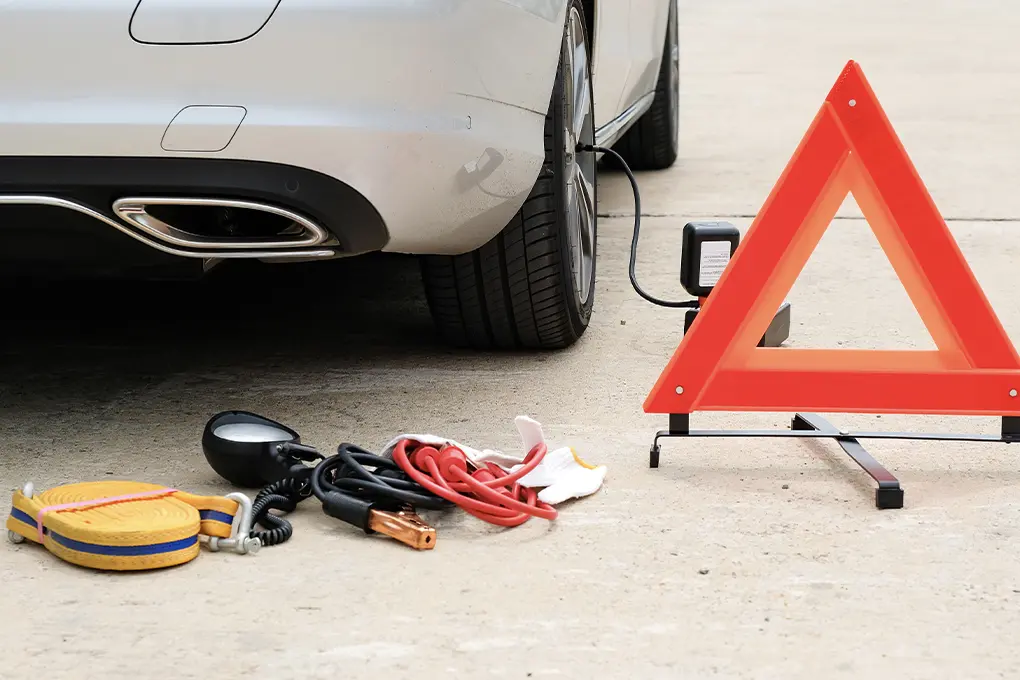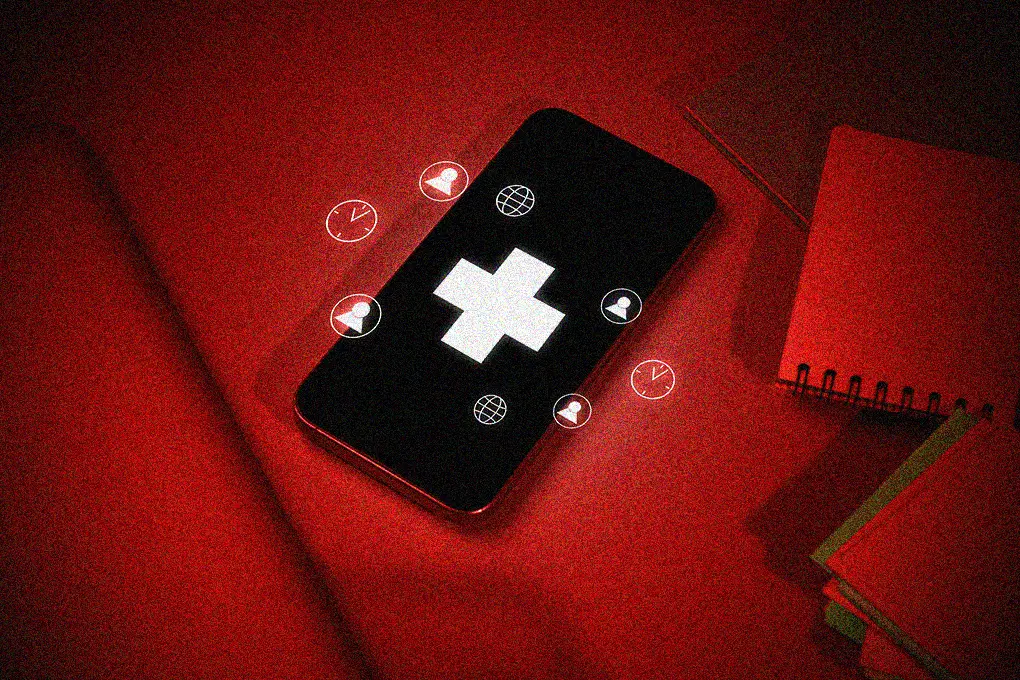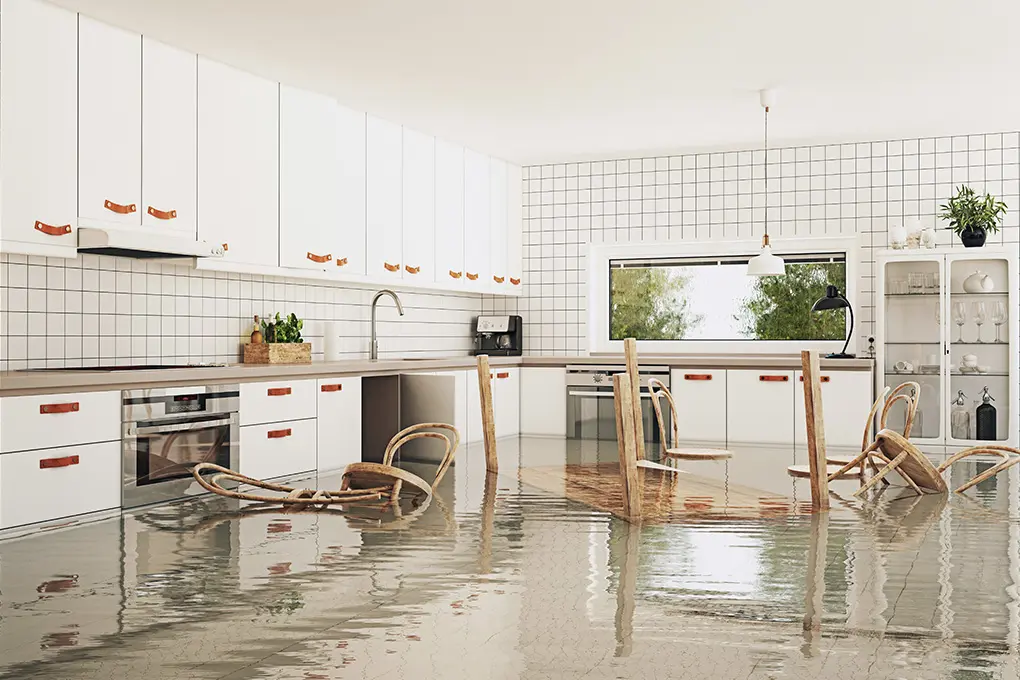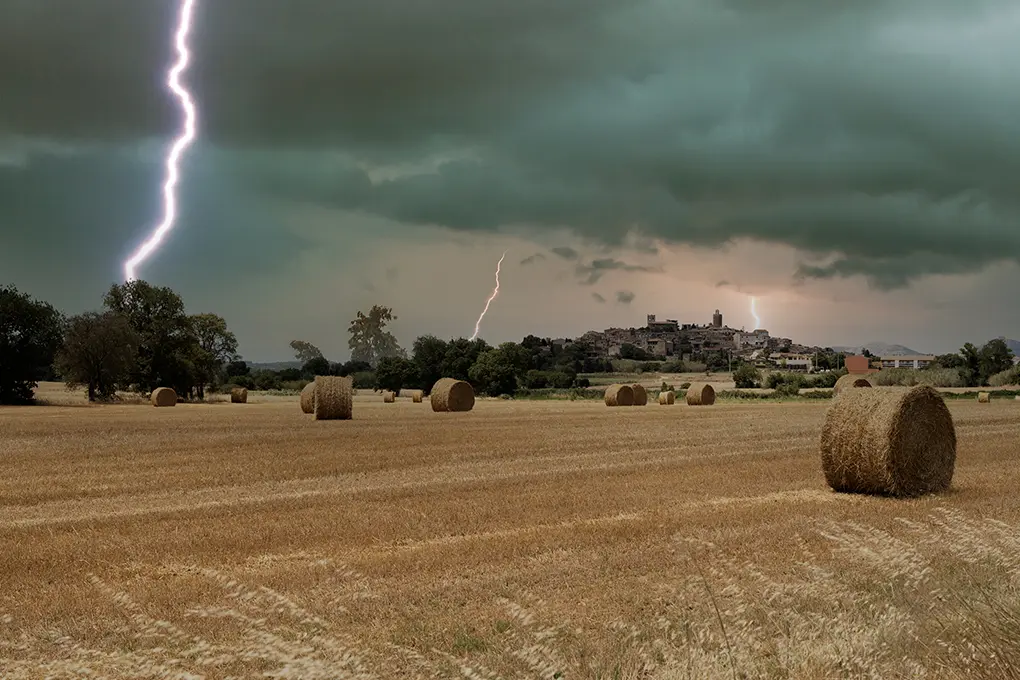Being stranded on the side of the road can quickly become dangerous, especially in extreme weather conditions. According to Tranforma Insights, vehicle breakdowns affect approximately 69 million drivers annually, or about one in three drivers, with many occurring in areas or at times when immediate assistance isn’t readily available.
A part of this has to do with driving on empty, as according to AAA, over 11 million Americans continue to drive even when the low fuel warning comes on, risking becoming stranded on the roadside due to running out of gas.
To illustrate how dangerous this really is, between 2015 and 2019, 263 people died in Texas while standing on the roadside due to their vehicles having broken down, illustrating the importance of being prepared to handle any vehicle breakdown situation no matter where it occurs.
Creating a comprehensive car emergency kit is an essential part of responsible vehicle ownership that can make the difference between a minor delay and a life-threatening situation.
At Batten Emergency, we’ve worked with thousands of families to prepare for unexpected situations, and we’ve found that car preparedness is often overlooked until it’s too late.
Commuting to work, planning a road trip, or running errands around town all require having the right supplies on hand; it’s practical and gives you peace of mind.
Let’s talk about the most important car emergency kit essentials that you absolutely must have.
Contents
- Key Takeaways
- Essential Car Emergency Kit Components: The Foundation
- First Aid and Personal Care Essentials
- Sustenance and Hydration
- Seasonal Kit Add-Ons: Preparing for Specific Challenges
- Emergency Kit Maintenance and Storage
- What To Do If You’re Stranded
- Beyond the Basics: Additional Considerations
- Building Your Kit: Start Small and Expand
- The Batten Approach to Vehicle Preparedness
- Conclusion: The Best Car Emergency Kit Essentials
- Frequently Asked Questions
Key Takeaways
- Breakdowns affect millions of drivers annually, making car emergency preparedness more important than ever.
- Every car emergency kit should include repair tools, safety markers, and a flashlight to manage common roadside issues.
- Communication backups like paper maps, power banks, and radios help during signal or battery failure.
- First aid supplies and personal medications can stabilize injuries before professional help arrives.
- Hydration and non-perishable food maintain energy and focus during long waits for assistance.
- Seasonal gear like blankets, cooling towels, or traction aids prepares you for winter and summer extremes.
- Regular kit maintenance ensures your supplies are functional and ready whenever you hit the road.
Essential Car Emergency Kit Components: The Foundation
Every vehicle should have a baseline emergency kit regardless of season or geography. These core items address the most common roadside emergencies and provide critical support until help arrives. Based on our experience with customers across diverse regions, we recommend starting with these car emergency kit essentials:
Vehicle Repair and Maintenance Tools
Having the right tools in your vehicle can make all the difference when facing unexpected roadside issues. While calling for help is always an option, being able to handle basic repairs or quick fixes yourself can save time, reduce stress, and even keep you safe in remote areas.
- Jumper Cables or Portable Jump Starter: A dead battery is one of the most common car problems, especially in cold weather. Traditional jumper cables require another vehicle, but a modern portable jump starter, like those from NOCO, lets you revive your battery without waiting for help. Many models also double as phone chargers and flashlights.
- Spare Tire, Jack, and Lug Wrench: Always check that your spare is properly inflated and that you’re comfortable using the jack and wrench. Too many drivers carry these but have never actually changed a tire themselves. A quick practice run in your driveway can pay off later.
- Tire Pressure Gauge and Portable Air Compressor: Low tire pressure reduces fuel efficiency and increases the risk of blowouts. A digital tire gauge paired with a compact 12V compressor can help you stay within safe pressure levels on the go.
- Tire Repair Kit: Not every puncture requires a full tire change. A plug-style tire repair kit can seal small holes well enough to get you safely to a repair shop, especially if you’re miles from the nearest service station.
- Multi-Tool with Pliers, Screwdrivers, and Knife: A high-quality multi-tool gives you flexibility for unexpected repairs, from tightening a loose battery terminal to trimming away damaged hoses or wires. Find the best multi-tools for emergencies right here.
- Duct Tape and Zip Ties: When something breaks, and you need it to hold together temporarily, these are your best friends. From cracked headlights to dragging bumpers, they can handle it all until you reach a mechanic.
- Work Gloves: Protect your hands from sharp edges, hot surfaces, and greasy parts. A durable pair of gloves can make roadside repairs safer and more comfortable.
- WD-40 or Penetrating Oil: Ideal for loosening stuck bolts, squeaky hinges, or frozen locks. A small canister doesn’t take up much space and comes in handy more often than you’d expect.
- Flashlight or Headlamp: Even in daylight, shaded areas under the hood or vehicle can be tough to see. A rechargeable flashlight, or better yet, a headlamp, frees up your hands and lights up your workspace.
- Rags or Shop Towels: Cleaning your hands, checking oil, or wiping down tools is a lot easier with a dedicated cloth in your kit. Keep a few on hand to avoid using your clothes or napkins in a pinch.
- Spare Fuses and Bulbs: Electrical gremlins like blown fuses or headlights that suddenly go dark can be fixed quickly if you have the right replacements with you.
- Funnel and Emergency Fluids: Carry a basic funnel along with small containers of windshield washer fluid, coolant, and motor oil. These can save your engine or visibility during long drives.
- Reflective Safety Vest and Warning Triangles: While not repair tools per se, they’re essential if you’re working on your vehicle near traffic. Visibility keeps you safe while making repairs.
Visit Batten Emergency for in-depth emergency guides to keep you and your family safe.
Safety and Signaling Equipment
If your vehicle breaks down or you’re involved in an accident, staying visible and safe should be your top priority, especially on highways or low-visibility roads.
Highway patrol officers consistently stress the importance of clearly signaling a disabled vehicle to avoid secondary accidents. The right gear can keep you visible, alert other drivers, and help emergency responders find you faster. Here’s what to keep in your vehicle:
- Reflective Warning Triangles or LED Road Flares: Place these a safe distance behind your vehicle to alert oncoming traffic. LED flares are reusable, safer than traditional pyrotechnic flares, and effective in all weather conditions.
- Reflective Safety Vest: If you need to step out near traffic, a high-visibility vest ensures drivers can see you, especially at night or during heavy rain. Store it where it’s easy to grab quickly.
- Flashlight or Headlamp with Extra Batteries: A reliable flashlight helps you see and be seen. Headlamps are even better, freeing up your hands for repairs or signaling. Look for waterproof models with a strobe feature for emergencies.
- Whistle: A loud whistle can cut through wind, fog, or darkness when shouting for help won’t do. It’s a compact, effort-free way to attract attention in an emergency.
- Window Breaker and Seatbelt Cutter Tool: In the event of a crash where doors won’t open or seatbelts jam, this tool can save your life. Keep it within arm’s reach, such as clipped to your sun visor or center console.
- Emergency Roadside Beacon or Safety Light Bar: These bright, flashing LED lights attach magnetically to your vehicle’s roof or hood and provide 360-degree visibility. Ideal for night breakdowns or low-light areas.
- High-Visibility Rain Poncho: Rain can dramatically reduce visibility. A bright-colored poncho keeps you dry and easy to spot while dealing with issues outside your vehicle.
- Glow Sticks: A non-electronic backup for lighting and signaling. They’re waterproof, battery-free, and can last for several hours; great for placing around your vehicle perimeter.
- Cones or Collapsible Safety Markers: While larger and more vehicle-dependent, collapsible safety cones add extra warning for oncoming traffic and work well in urban or multi-lane situations.
- Notepad and Marker: Useful for leaving a visible note on your windshield if you must leave your car temporarily, especially in remote areas. You can also use it to record incident details or license plates.
Communication and Navigation Tools
In an emergency, your ability to communicate and orient yourself can make a huge difference. We’ve seen countless families caught off guard when cell signals dropped or batteries died. These essential tools help you stay connected, find your way, and document important details when it matters most:
- Fully Charged Power Bank: Keeps your phone operational even if your car battery dies. Choose one with at least 10,000mAh capacity and check it regularly to ensure it’s charged and ready.
- Car Charger for Mobile Devices: A USB or USB-C car adapter ensures your phone stays powered when your engine is running. Models with dual ports can charge a second phone or flashlight.
- Physical Map of Your Area: Don’t rely entirely on GPS. Paper maps are indispensable in areas with poor signal or when devices fail. Keep one in your glove box that covers local roads and major routes.
- Compass: A simple compass provides basic directional guidance if you’re forced to leave your vehicle and travel on foot. Some multi-tools and emergency whistles include built-in compasses.
- Emergency Contact Card: A printed card with your name, emergency contacts, medical info, and allergies. Keep it in your glove box or wallet in case first responders need vital information quickly.
- Two-Way Radios (Walkie-Talkies): In areas with no mobile signal, walkie-talkies provide short-range communication with others in your group or nearby motorists. Choose models with a 10-20 km range.
- Weather Radio (Hand-Crank or Battery Operated): Lets you receive weather updates, emergency broadcasts, or evacuation instructions during power outages or natural disasters.
- Mobile Hotspot Device: A standalone hotspot can keep your devices connected when your main carrier’s signal is weak. These are especially helpful for families traveling through rural areas.
- GPS Device with Offline Maps: Unlike phone-based GPS apps, standalone GPS units often work without data and include topographic or backroad mapping options, ideal for adventurers and remote travel.
- Emergency Contact Sheet for Kids: If you’re traveling with children, include a simple, waterproof card with their name, your phone number, and an emergency contact, just in case you get separated.
First Aid and Personal Care Essentials
Medical emergencies rarely happen at convenient times or places. Whether you’re miles from help or stuck in a traffic jam, having the right supplies on hand can make a critical difference.
Emergency room physicians often stress the importance of the “golden hour”; the first 60 minutes after an injury when prompt care can dramatically improve outcomes.
A well-prepared first aid kit and basic hygiene supplies give you the ability to treat minor issues or stabilize more serious conditions until professional help arrives.
- Comprehensive First Aid Kit: Your kit should include a variety of adhesive bandages, gauze pads, antiseptic wipes, adhesive tape, medical scissors, tweezers, burn cream, antibiotic ointment, a digital thermometer, disposable gloves, and an easy-to-follow first aid guide.
- Personal Medications: Pack a small backup supply of critical prescription meds such as insulin, asthma inhalers, or heart medication.
- Pain Relievers: Include common over-the-counter options like acetaminophen, ibuprofen, or aspirin to manage headaches, muscle pain, or fever while waiting for assistance.
- Hand Sanitizer and Wet Wipes: Crucial for cleaning hands and minor wounds when running water isn’t available. Antibacterial wipes can double as a quick clean-up tool.
- Insect Repellent: If you’re stuck in wooded or rural areas, bug spray helps protect against bites and discomfort, particularly in warmer climates or at dusk.
- Emergency Mylar Blanket: These compact foil-like blankets reflect body heat and are effective at preventing hypothermia during cold weather or shock-related situations.
- Hydration Supplies: Keep a few sealed water bottles in your vehicle, or include electrolyte powder packets to mix into water for faster hydration if someone’s dehydrated or ill.
- Cold Packs: Instant cold packs help manage swelling, sprains, or minor injuries; no refrigeration needed. Just squeeze to activate.
- Burn Gel and Aloe Vera Packets: These offer relief from minor burns or sun exposure, especially useful if you’ve touched hot metal or been waiting in the sun.
- Face Masks: Helpful in case of air quality issues, illness, or close contact with others during emergencies. Disposable surgical masks or KN95s are lightweight and easy to pack.
- Allergy Medication: Include a few antihistamine tablets like diphenhydramine (Benadryl) for unexpected allergic reactions to insect stings, food, or plants.
Sustenance and Hydration
Getting stranded without food or water can impair your ability to think clearly, stay alert, and respond effectively.
Even short-term dehydration can cause fatigue, dizziness, and confusion, while hunger can sap your energy during moments when you need it most.
That’s why it’s essential to include a supply of nourishment and hydration in your emergency car kit, especially if you travel long distances, through rural areas, or in extreme weather.
- Bottled Water: Store at least one gallon per person in your vehicle, and make sure to rotate it every few months to keep it fresh. Smaller bottles are easier to portion out and carry if needed.
- Non-Perishable, High-Energy Foods: Stock your car with a mix of nutrient-dense snacks like granola bars, protein bars, trail mix, vacuum-sealed jerky, peanut butter packets, and dried fruit. Emergency ration bars with extended shelf lives can serve as a last-resort backup. Check out the best emergency food for cars right here.
- Portable Water Filter or Purification Tablets: A compact water filter like the LifeStraw or purification tablets can turn natural water sources into drinkable water.
- Electrolyte Powder Packets: Add these to water to restore lost minerals and boost hydration, particularly useful during hot weather or after physical exertion.
- Reusable Water Bottles: Include a sturdy, BPA-free bottle to refill when clean water is available. Collapsible options save space but still get the job done.
- Manual Can Opener: If you include canned goods like tuna, beans, or soup in your kit, make sure you have a way to open them that doesn’t rely on electricity.
- Utensils and Napkins: Keep a few disposable forks, spoons, and napkins or paper towels in a resealable bag so you’re not left eating peanut butter with your fingers.
- Emergency Food Pouch Meals: Shelf-stable meal kits such as freeze-dried camping meals can provide more substantial calories when needed; just add hot water.
Seasonal Kit Add-Ons: Preparing for Specific Challenges
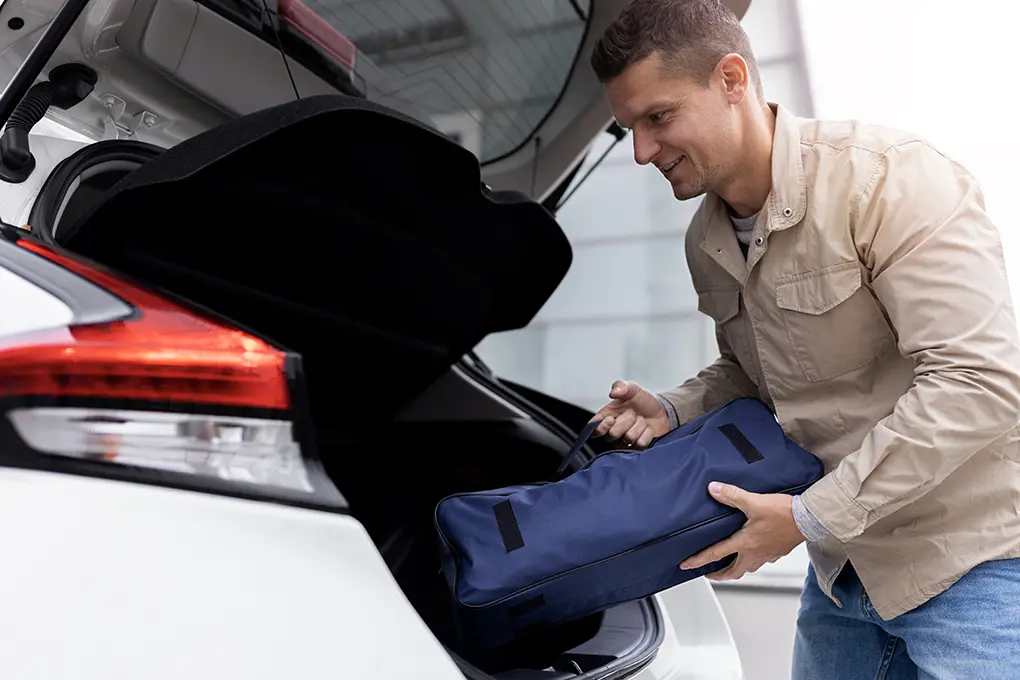
Weather-specific preparedness requires tailoring your emergency kit to the seasons you’re likely to encounter. Based on customer feedback from those who’ve experienced weather emergencies firsthand, we recommend these seasonal adjustments:
1. Winter Driving Emergency Supplies
Cold weather introduces its own set of challenges, from slippery roads to the very real risk of hypothermia if you’re stranded for any length of time.
This is a real threat. For example, in January of 2022, drivers in Virginia were stranded on a highway for up to 27 hours in freezing conditions due to an extreme snowstorm, illustrating just how important a winter car survival kit is.
Even a mild winter day can turn dangerous if your car won’t start or gets stuck in snow. Be sure your kit includes items that keep you warm, visible, and mobile.
- Warm Blankets or a Sleeping Bag: Choose insulated or wool options that retain heat even in freezing temperatures, far more effective for long waits than a standard mylar blanket.
- Extra Warm Clothing: Include layers like hats, gloves, thermal socks, scarves, and a waterproof jacket. Keeping dry is as important as staying warm.
- Ice Scraper and Snow Brush: Visibility is crucial. Choose a sturdy combo tool that can handle thick ice buildup and heavy snow on windshields.
- Folding Shovel: A collapsible snow shovel can dig your tires out of trouble or clear space for emergency responders to reach you.
- Bag of Sand, Cat Litter, or Traction Mats: Spread these under your tires to regain traction on icy or slushy roads. Many drivers swear by this for getting unstuck without a tow.
- Spare Antifreeze and Winter-Grade Washer Fluid: Ensure your vehicle systems stay operational in sub-zero conditions; standard fluids can freeze and cause major issues.
- Emergency Candle Heater: A small tin candle in a metal container can provide surprisingly effective warmth in a sealed vehicle during short-term emergencies.
- Snow Chains or Tire Socks: In mountainous or rural areas, these can be essential for getting through unplowed roads safely.
2. Summer Heat Preparedness Items
Summer may seem less dangerous than winter, but extreme heat poses serious risks. Heat exhaustion and dehydration can escalate quickly without proper preparation.
- Extra Drinking Water: Always pack more than you think you’ll need. A good rule is at least 1.5 gallons per person during warm weather travel.
- Cooling Towels or Neck Wraps: Activated with water, these can lower your body temperature significantly and make waiting in the heat much more bearable.
- Wide-Brimmed Hat and Sunglasses: Keep the sun off your face and protect your eyes while walking or working outside the vehicle.
- Sunshade for Windshield: Reduces the greenhouse effect inside your vehicle, keeping seats and steering wheels cooler while you wait.
- Extra Coolant for Your Vehicle: Engine overheating is a leading cause of summer breakdowns. Keep a spare container of the appropriate coolant on hand.
- UV-Protective Clothing or Arm Sleeves: If you need to walk for help, these reduce sun exposure and prevent burns.
- High-SPF Sunscreen: Essential if you’ll be exposed for more than a few minutes, especially if you’re already dealing with stress or dehydration.
- Electrolyte Tablets or Sports Drinks: Replenish lost minerals quickly and help prevent heat-related illnesses while you wait or hike for help.
Emergency Kit Maintenance and Storage
Having a well-stocked emergency kit is a great first step, but it’s not a set-it-and-forget-it item. Supplies degrade over time, batteries lose their charge, and seasonal needs change. To make sure your gear is ready when you need it, it’s a good idea to schedule a checkup twice a year. Many families find it helpful to tie this to daylight saving time.
Regular Maintenance Tasks
- Check Expiration Dates: Inspect food, water, over-the-counter medications, and even less obvious items like road flares or chemical warmers. Anything expired should be replaced immediately.
- Test Electronic Devices: Make sure flashlights still work, batteries haven’t corroded, and your portable jump starter holds a charge. Recharge or replace as needed, and always keep backup batteries in your kit.
- Inspect Tools for Rust or Damage: Look over your jack, lug wrench, multi-tool, and any cutting instruments. If you see signs of corrosion or wear, it’s safer to replace them than risk failure during an emergency.
- Rotate Seasonal Items: As the weather changes, so should your gear. Swap out winter blankets and hand warmers for sunshades and cooling towels, or vice versa, depending on the season ahead.
- Review and Update Personal Items: If your kit contains prescription medications or personal documents, make sure the contents are still accurate and useful. It’s easy to forget to update these after a move, a medical change, or a new addition to the family.
- Check for Missing or Used Supplies: If you’ve dipped into your kit at any point, even just to borrow a flashlight or snack, take stock and refill right away.
Proper Storage Considerations
- Use a Durable, Water-Resistant Container: A heavy-duty plastic bin with a sealable lid works well to keep moisture, dirt, and pests out. Some people opt for soft-sided bags with internal organization for easier access.
- Keep the Kit Accessible: Your emergency kit won’t do much good if it’s buried under sports gear or wedged behind suitcases. Store it where you can grab it quickly, like in a trunk side compartment, rear cargo box, or behind the driver’s seat.
- Consider Temperature Extremes: If you live in an area with very hot or cold seasons, pay special attention to how heat and frost can affect items like lithium batteries, aerosol sprays, or medications. For sensitive supplies, bring them inside during weather extremes or store them in an insulated container.
- Label and Organize for Quick Access: Use clear labels or color-coded pouches to group items by type; first aid, tools, food, etc., so you’re not rummaging in a stressful situation.
- Keep a Smaller Essentials Bag Inside the Cabin: If your main kit is in the trunk, consider keeping a mini kit with water, snacks, a flashlight, and a phone charger in the glovebox or center console for quicker access.
Learn more about how to build a bug out bag right here.
What To Do If You’re Stranded
Having the right gear is only half the equation. When you’re stuck on the roadside, knowing how to respond calmly and effectively can make all the difference. Here’s a step-by-step protocol we often recommend to families and drivers preparing for emergencies:
- Pull Over Safely: Move your vehicle as far off the road as safely possible, ideally onto the shoulder or a flat, visible area. Turn on your hazard lights immediately to alert other drivers.
- Set Up Visibility Markers: Place reflective warning triangles or LED road flares several feet behind your vehicle. This increases visibility and reduces the risk of being hit by oncoming traffic, particularly at night or in low-visibility conditions.
- Assess the Situation: Take a moment to evaluate your surroundings. Are you in a safe area? Is the weather getting worse? Can you see help nearby? If it’s dangerous to stay where you are, for example, if your vehicle is at risk of being hit or you’re exposed to extreme cold or heat, consider carefully whether it’s necessary to move.
- Stay With the Vehicle When Possible: Unless there’s an immediate threat, your vehicle is your best shelter. It offers protection from the elements and makes you much easier for rescuers to find than if you’re on foot. Keep doors locked and windows slightly cracked for ventilation if needed.
- Run the Engine Safely: If you’re using the engine to stay warm, run it for only about 10 minutes each hour to conserve fuel. Before doing so, make absolutely sure the exhaust pipe is clear of snow, mud, or debris to prevent carbon monoxide from building up inside the car.
- Use Supplies Conservatively: Start rationing your food and water early if you don’t know how long you’ll be stuck. Stick to small, regular sips of water and modest food portions. Use flashlights sparingly and keep phones powered off or in low-power mode until needed.
- Signal for Help: Visibility and noise are your friends. Honk your horn in three short blasts as this is a recognized distress signal. Hang a brightly colored cloth (like a bandana or T-shirt) from your window or antenna. At night, flash a light or use a whistle periodically to help alert passersby or rescue teams.
- Stay Calm and Think Ahead: Keep track of time, monitor the weather if possible, and make a plan for what you’ll do if help hasn’t arrived in a certain number of hours. Write down any important notes in your emergency notebook, like the time you stopped, your location, or any changes in your condition or surroundings.
Beyond the Basics: Additional Considerations
For those who frequently travel in remote areas or want more comprehensive preparation, consider these additional items:
- CB Radio or Ham Radio: When cell service isn’t available, these alternative communication methods can be invaluable. There are some great ways to communicate even when cell service is down.
- Emergency Shelter: A small tent or tarp system if you need to leave your vehicle.
- Fire-Starting Tools: Waterproof matches, lighter, and fire starters for emergency heat or signaling.
- Multi-Day Food Supply: More substantial options like freeze-dried meals if you travel very remote routes.
- Basic Auto Repair Manual: Step-by-step guidance for common roadside fixes.
- Paper Maps Covering Broader Regions: Particularly important for long-distance travel.
Building Your Kit: Start Small and Expand
If creating a comprehensive kit seems overwhelming, start with the absolute essentials: jumper cables, flashlight, first aid kit, water, and a few snacks.
Many of our customers begin with a basic emergency preparation kit and gradually add components based on their specific needs and travel patterns.
For families with children, we typically recommend including comfort items like small games or activities and familiar snacks to help manage stress during delays.
Parents have told us that having these simple additions has made roadside waits significantly more manageable.
Those who frequently travel with pets should add pet-specific supplies: extra water, collapsible food/water bowls, leash, and any medications. Remember that a stressed pet may behave unpredictably, so having familiar items can help keep them calm.
The Batten Approach to Vehicle Preparedness
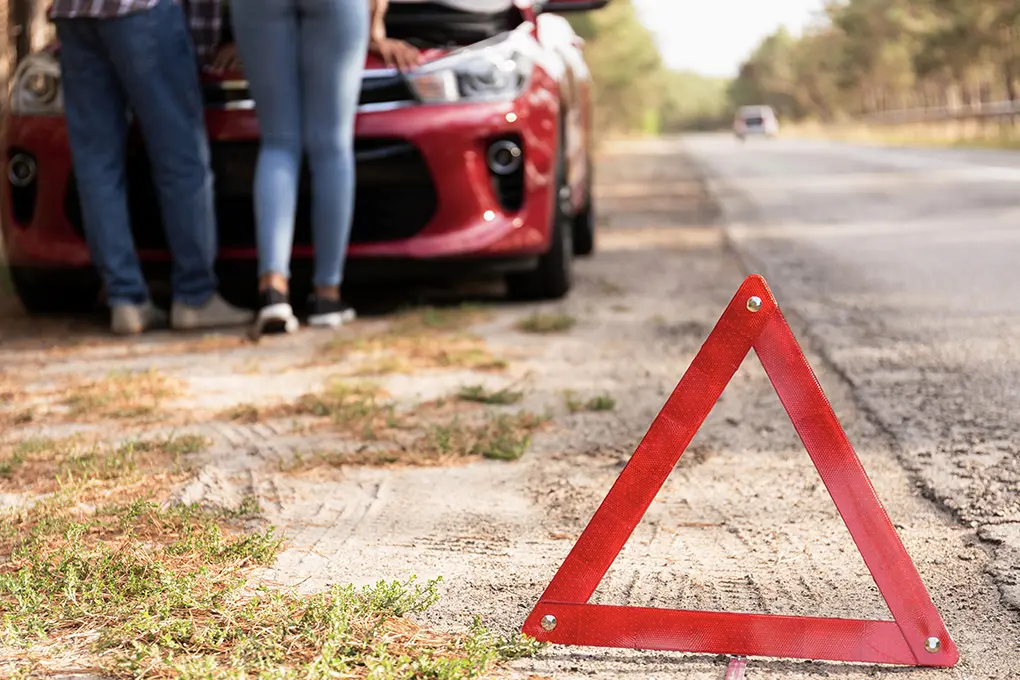
At Batten, we believe in balanced preparedness that addresses realistic scenarios without overwhelming you. The most effective emergency kit is one that’s actually in your vehicle, not the elaborate one you planned but never assembled.
Based on our experience helping families prepare for emergencies, we find that car kits assembled in stages over time tend to be more complete and better maintained than those purchased as one-time investments.
We recommend starting with the basics, then adding seasonal items as weather changes, and finally incorporating special needs items based on your typical travel patterns. This approach spreads the cost over time and allows you to prioritize the most likely scenarios first.
Remember that vehicle preparedness extends beyond your emergency kit; regular maintenance checks, keeping at least a half tank of fuel at all times (especially in winter), and sharing your travel plans with others are equally important safety practices that complement your physical supplies.
Conclusion: The Best Car Emergency Kit Essentials
If you’ve ever been stuck on the side of the road, you know how fast a minor inconvenience can escalate, especially in extreme weather. A well-stocked car emergency kit is essential.
The bottom line? With the right gear, knowledge, and a little planning, you can turn a potentially dangerous situation into a manageable one.
Start with the basics, add as needed, and make your emergency kit a permanent part of your car. It’s one of the simplest ways to protect yourself and your loved ones year-round.
Want to get started with your vehicle emergency preparedness? Browse Batten’s expert-selected emergency preparation products for quality tools and supplies that meet real-world emergency needs.
Frequently Asked Questions
How Much Water Should I Keep in My Car?
Store at least one gallon per person, and rotate every 3 to 6 months to maintain freshness.
What Is the Best Container for a Car Emergency Kit?
Use a durable, water-resistant bin with a sealable lid or a heavy-duty soft bag with compartments.
How Do I Keep Emergency Gear From Freezing in Winter?
Bring temperature-sensitive items indoors during cold spells or store them in an insulated container.
Should My Emergency Kit Include Tools for Pets?
Yes, pack water, food, leash, medications, and familiar items if you frequently travel with pets.
Can I Use Expired First Aid Supplies in a Pinch?
Expired items may lose effectiveness. Use them only if no other options are available, and replace them promptly.
Sources
- Roadside Assistance: 337 million revenue generating units in 2033 driven by the rising prevalence of OEM-offered solutions – Reports & Insights
- 14 Vehicle Breakdown Statistics Every American Driver Needs to Know (2024)
- OPINION: Breakdowns on the road too often lead to death
- Golden Hour – Knowledge and References – Taylor & Francis
- Thousands of stranded drivers cleared from snowbound Virginia highway | Reuters
- 24 Million Americans Continue To Drive On Empty And Could End Up Stranded | AAA SoCal
